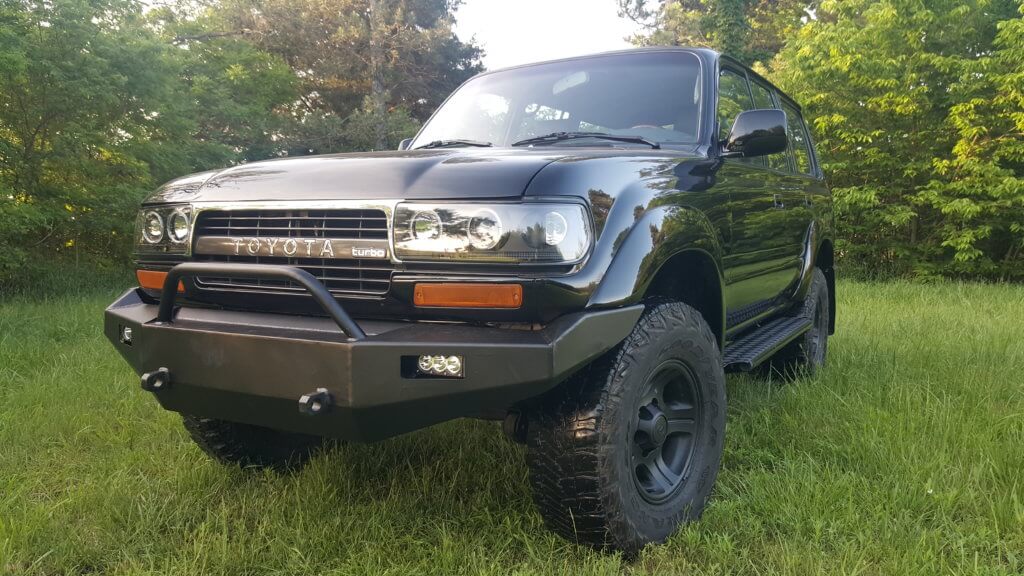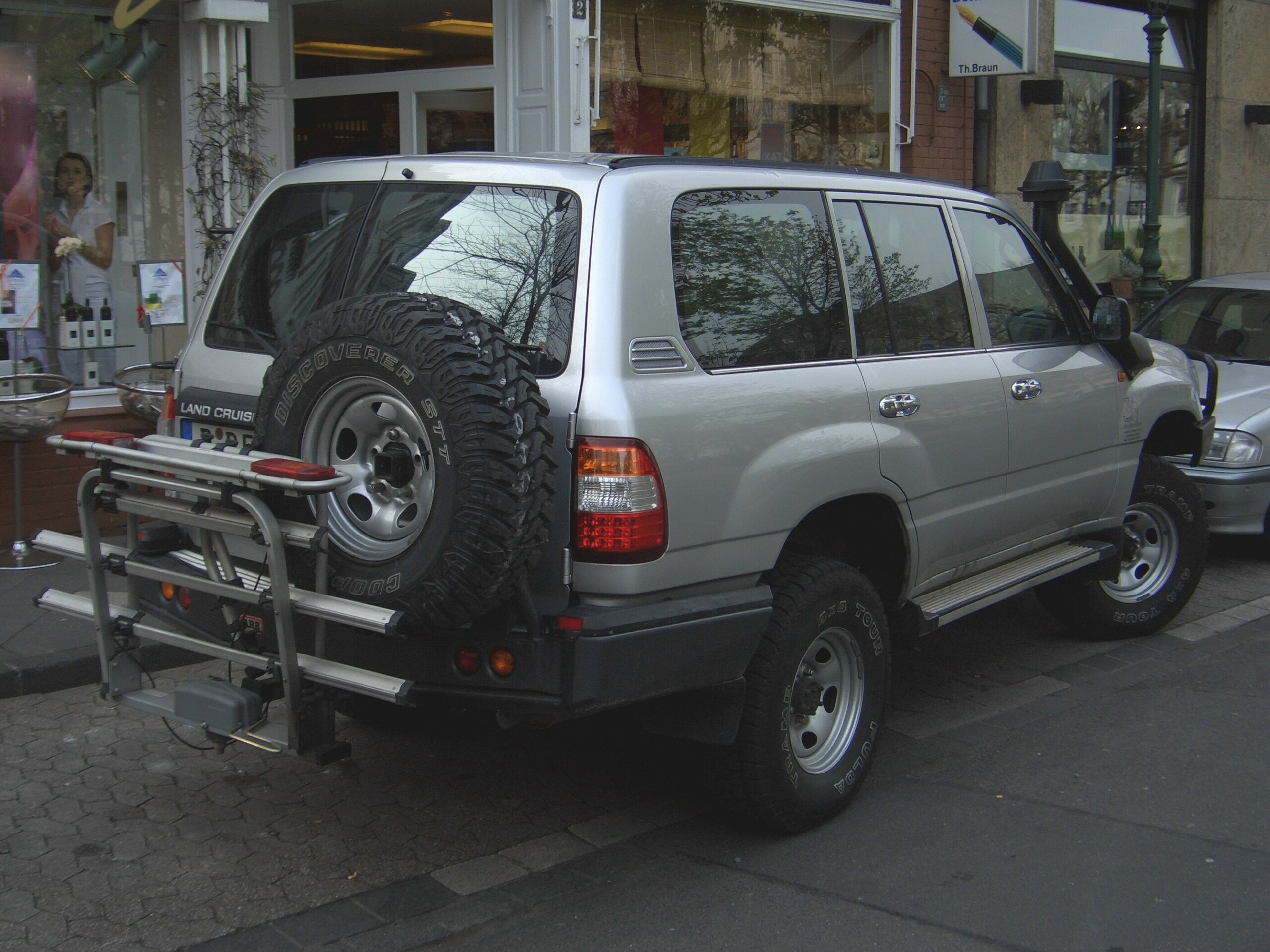Driving five ages of exemplary Toyota Land Cruisers in a single day consecutive uncovers exactly the way in which enduringly skilled the SUV has been.
We're nearly an all-new Toyota Land Cruiser for the U.S., yet while we pause, we should go on an outing through a world of fond memories. A while ago when Toyota held a press see for the 2020 Land Cruiser Legacy Version, it acquired a lot of rare Land Cruisers from the Land Cruiser Legacy Exhibition hall to help us to remember the set of experiences it was regarding with the new model. Thus, and to some degree extraordinarily, I got to drive five ages of exemplary Land Cruisers in a single day. This is the thing they were like.
1960-1983 Toyota FJ40 Land Cruiser
Driving old vehicles can be a mistake, as they seldom end up being pretty much as great as you trust, however the FJ40 was far superior to I envisioned. What separates the FJ40 is its wonderfully mechanical feel — the cry of the cog wheels, the metallic drone of the motor, the clang as the grasp pedal raises a ruckus around town flooring plank. The short outfitting implies there's a lot of moving to be finished, and both grip and shifter have long tosses yet exact activity. Tooling around the roads of Salt Lake City, I felt a unity with the machine that couple of vehicles convey. Of all the Land Cruisers here, this was by a wide margin my number one.
The FJ is boisterous yet rides more easily than I anticipated given its short wheelbase. This specific FJ40 was a 1977 model with power controlling, yet there's still a lot of wheel-spinning to be finished, however the prize is a ludicrously little turning span. Our rough terrain course was lightweight — these are, all things considered, historical center pieces — however obviously the FJ40 would be glad to conquer anything that hindrance we put under its tires, and all on unadulterated mechanical moxie — no extravagant gadgets required here, much thanks.
1967-1980 Toyota FJ55 Land Cruiser

Cruiser fans call the FJ55 the Iron Pig after its unattractive styling, yet I've generally loved the appearance of these Cruisers, and was shocked to learn they were developed right to 1980. The FJ55 was planned with American (as well as Canadian and Australian) families as a top priority, arriving in the States six years before the Chevrolet Rural would begin to offer four legitimate traveler entryways. The mechanical pieces are generally equivalent to the Fj40's, however a genuine secondary lounge (and a seat front and center) in addition to a plastic cushioned run show Toyota's initial endeavors to make the Cruiser more comfortable.
The driving force of this 1977-constructed model was to some degree off key (at one point it misfired before the lodging, provoking the safety crew to call the police) and presumably a bit pokier than most. In any case, as I cajoled the FJ55 up the lofty slope to the Seasonal resident ski resort — 30 mph was all the old young lady was able to give me — I could comprehend the reason why a few Americans actually didn't take "them furrin' occupations" all that genuinely at that point. While somewhat more sealed shut than the FJ40, the low degree of refinement was comparative. Rough terrain, the FJ55 is hampered by its long length and irrationally enormous turning circle. One can comprehend a reluctance for the benefit of no-nonsense Land Cruiser fans to embrace it, however for every one of its shortcomings, I found the FJ55 unusually charming.
1980-1990 Toyota FJ60 Land Cruiser

This was the Land Cruiser I was generally anxious to drive since it's the one the Cool Fathers drove when I was a youngster. Like the FJ55, the FJ60's styling was a couple of years old-fashioned in any event, when new, yet it had an engaging retro energy before retro energies were a thing. The inside is a model of 1980s innovation, with an efficient dashboard and perfectly striped texture on the seats and entryway boards that mark the Land Cruiser's most memorable provisional progress from rural device to blue-blood.
In any case, you don't need to look under at the strong axles to see that the FJ60 is still immovably established before: A manual stifle switch is an update that the carbureted 2F motor in the engine is unaltered, the manual transmission misses the mark on fifth stuff, and the parttime all wheel drive framework has physically locking centers. But for all its matured equipment, the FJ60 is substantially more respectful than the FJ55. It's calmer, possibly faster, and more agreeable, and the controls seem OK. A taller last drive proportion carries quietness to interstate cruising, however this specific FJ60 appeared to be most joyful at a moderate 60-mph stride.
Toyota would facelift the vehicle for 1988, with a de-stroked fuel-infused variant of the F-series motor, a programmed transmission, and square headlights. At that point, this could have seemed like the Land Cruiser for the ages — yet large changes were brewing.
1991-1997 Toyota FJ80 Land Cruiser
It's difficult to consider '90s-periods vehicles old. Yet, with information on history, it's not difficult to see that the FJ80 is a momentary model, one with wheels established in the future as well as the past. With the Cressida on outs and the Avalon a couple of years away, the Land Cruiser was being prepared as Toyota's lead. It looks like it outside and in, and the mechanical spec incorporates a standard-fit programmed transmission and full-time four-wheel-drive. Loop springs at every one of the four corners are the Land Cruiser's most memorable significant admission to on-street politeness.
But those loop springs are as yet darted to live axles, and the 3FE motor in the 1991 model I drove is minimal in excess of a modernized subsidiary of the cam-in-block six tracked down in the first FJ25. With 155 strength and 220 lb-ft of force, is battles with the FJ80's two-and-a-quarter-ton mass. (For 1993, Toyota would fit an all-new 24-valve DOHC straight-six with a substantially more valuable 212 drive.) However the ride is smooth and refined, and when Toyota chose to offer a gentler sprung Lexus variation (the 1996 LX450), the FJ80 slipped effectively into the job. Driving the FJ80 wanted to ride the occasion skyline of a dark opening: I could see the sum of the past and future spread out before me. That, and I had my spirit sucked into obscurity.
1998-2007 Toyota UZJ100 Land Cruiser

Of all the legacy Land Cruisers, the UZJ100 (named for its UZ-series V-8 motor) was the most straightforward to drive and the hardest to expound on. This is the vehicle that set the example for the Land Cruiser's next twenty years, and from in the driver's seat it doesn't actually soak in that one is driving a 20-year-old plan. (In truth, it doesn't help that Toyota's image wide inside styling didn't improve a lot of piece of twenty years.)
The UZJ100 made further concessions to comfort, including an autonomous suspension bar front suspension, which the Cruseristi welcomed as the apocalypse. Yet, the 4.7-liter V-8 makes a decent incidental award. Its 235-hp rating appears to be really bizarre today, yet 320 lb-ft of force gives the UZJ100 decent mid-range punch. It is ordinary: It seems like a cutting edge J200 that hasn't exactly subsided into its job as the rich youngster to Drive it. To see the value in this Land Cruiser, one should comprehend the worth of its slashed from-stone feel, a commendable selling point when Land Wanderers were known for shedding parts aimlessly.
The J200 that succeeded it — read our audit of the previously mentioned 2020 Legacy Version here — endeavored to counter a significant number of the reactions encompassing the J100's suspension, including interconnected auto-separating stabilizer bars (the Kinematic Dynamic Suspension Framework, or KDSS) and electronic Slither Control. Land Cruiser enthusiasts are simply now beginning to see the value in the UZJ100, and maybe its less difficult, more mechanical nature will be essential for its getting through offer.









